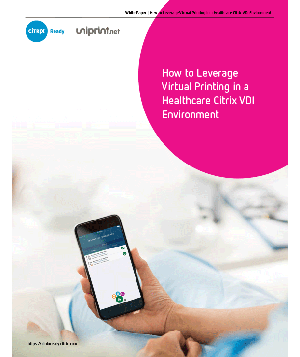3 Best Implementation Practices to Prepare for a VDI Environment

Enterprises across the world have begun adopting virtual computing, with the aim of enhancing their data security through the centralization of corporate data, reducing the risk of sensitive company information and intelligence escaping through end-user devices that have been compromised.
With an increasing number of companies implementing virtualized computing solutions everyday, Enterprise IT leaders and executives are constantly in search of ways to ensure that their enterprise environments are in optimal condition for Virtual Desktop Infrastructure (VDI) adoption.
Increasing enterprise network bandwidth while decreasing network lag, and efficiently using bandwidth, are critical to delivering a consistent, high quality user experience in VDI environments.
Let’s look at how these factors cater to an improved overall VDI implementation and enable users with the environment they need to ensure continued efficiency and productivity in the workplace.
Enable High Quality Features through Upsizing Enterprise Bandwidth
With the latest computing technologies demanding high quality prerequisites such as high definition display settings with optimized color depth, dual monitor compatibility, enterprise-wide print traffic routing and management, etc., company-wide bandwidth requirements have also increased significantly.
The user-demand for top-quality experience has resulted in technology vendors constantly innovating and enhancing their existing offerings.
Consequently, the requirement for greater network bandwidth has also risen with such enhancements.
Take into account a full-screen, high definition video, typically taking up in excess of 5 Mbps of bandwidth!
For employees who work closely with graphic designing, this usage only increases, especially with the advent of heavily taxing, new, innovative displays such as 4K.
In order for enterprise IT leaders and decision-makers to truly comprehend the bandwidth demands for their specific VDI environments, they should focus on determining how much bandwidth is required to provide users with an suitable experience, on a user to user basis, and then adapt their infrastructure accordingly.
Check out this free whitepaper on how to leverage virtual printing in your healthcare VDI environment!
Decrease the Network Lag to Ensure Optimized Experience
Managing network latency can be a significant issue for enterprises deploying fewer servers spanning wider distances.
The amount of latency, or lag being experienced, is directly proportionate to distance, the network service delivery method in use, load, and traffic.
In most situations, latency hinders the user experience while interacting with taxing applications.
For example, a common situation where latency is experienced, is when users begin typing, only to realize that they are typing at a much faster pace than the monitor is showing, with the alpha-numeric characters appearing after a delay.
As you can imagine, this would be quite frustrating to anyone using a computer, let alone employees trying to get their work done, as part of a larger business process.
This leads to workflow and process inefficiencies, and ultimately may hurt an organization’s yield!
IT leaders should ensure that their organizations manage their VDI environments according to distance limitations, with very specific measures to ensure latency reduction.
Running an entire global VDI environment stemming from a single-location server is not ideal for latency management and will more than likely cause latency issues for employees.
Enhance Efficiency of Bandwidth Usage by Configuring VDI Settings
Enterprises that can get past the limitations caused by bandwidth and latency problems may need to simply tune their VDI settings, without altering their existing infrastructure, if users happen to experience issues with VDI functioning.
The majority of VDI products offer settings that can be altered, such as color and display resolution.
While this does enable organizations with a quick fix for their VDI environments, without the hassle of having to reconfigure their entire network, it can be quite challenging for decision-makers to balance network performance and end-user experience demands.
Printing in VDI Environments
With printing being an integral day-to-day task for enterprises across the corporate world, IT leaders looking into VDI adoption or improving their current VDI environments, should consider implementing a VDI printing solution.
The management of print drivers in VDI environments presents a significant challenge for IT administrators.
Organizations should look for third-party software that streamlines VDI printing through the use of a single universal print driver, along with a centralized management console for ease of administration in complicated VDI contexts, while offering an environmentally agnostic solution that enables workflow optimization!
Try UniPrint InfinityCloud
Whether you are printing at the office or at home, UniPrint InfinityCloud is the cloud printing solution of choice for your organization.
Recent Posts
- How to Streamline and Modernize Printing in Healthcare Environment
- When Print Management Becomes a Crisis: How to Act Fast
- 10 Ways Cloud Print Management Can Increase Security to Prevent Data Loss and Increase Productivity
- Serverless Printing 101: A Beginner’s Guide to Going Server-Free with Print
- Cloud Printing Management: The Secret to Fewer Help Desk Tickets
- Why Should You Outsource Printing Management? A Comprehensive Overview
- How Cloud Print Management Prevents Print Server Vulnerabilities
- Is Printing Dead?
- How InfinityCloud Outshines Microsoft Universal Print in 2024
- How the Cloud Print Management Software Drives Sustainable Business Practices
- See All

















